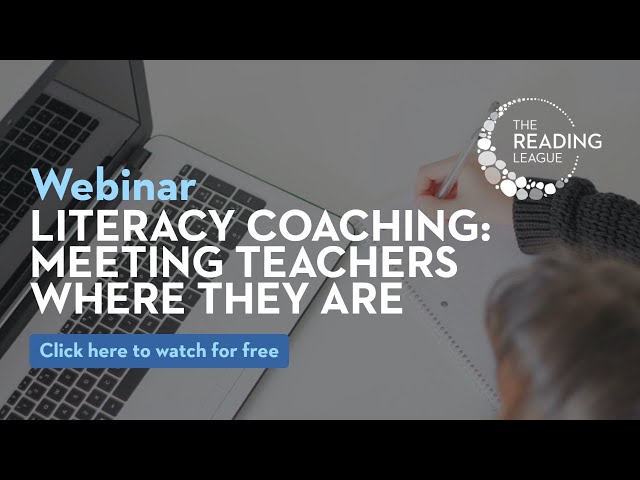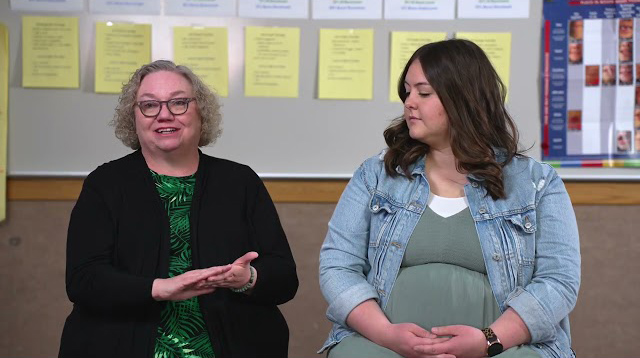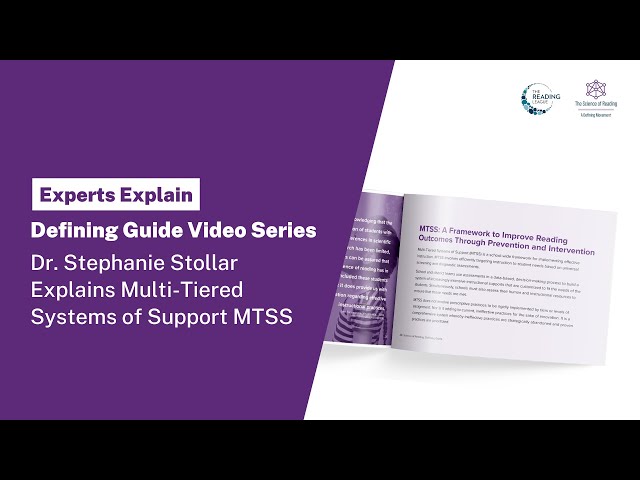
Administrators and Administrator Preparation Programs
Primary Considerations for District and Building Administrators and Administrator Preparation Programs
Effective school leaders can have a significant impact on student success. In order to make this happen, they are responsible for a wide range of decisions, one of the most important of which is ensuring that evidence-aligned reading instruction is present in their schools. Knowing how to prepare the system for implementation and support of their educators is essential for aspiring, new, and seasoned administrators alike.
As educators gain professional knowledge about reading instruction, it is common to hear them say, “once we know better, we do better”. In order for them to “do better”, educators need administrators who are committed to providing them with the resources and support needed to succeed. Administrators’ decisions regarding staffing, professional development, and instructional materials directly impact educators’ abilities to implement and sustain evidence-aligned instruction. Such decisions will be most impactful if made by administrators who have a solid understanding of the science of reading. It is critical that administrators prioritize their own professional knowledge of what it takes to produce successful reading outcomes for students. Administrators who do this become highly capable decision makers.
Not sure where to begin?
The resources below point you in the right direction.
Transforming to Alignment With the Science of Reading: Important Considerations
Sustainable transformation to evidence-aligned instruction is not likely by simply purchasing a science-aligned curriculum. For improved, sustainable outcomes, action plans that include a long-term commitment to staff support and material alignment are required.
When beginning an effort to transform instructional practices, action plans must address change on a systems level, one step at a time. Even the best action plans will face challenges such as pushback, turnover, and course corrections. Transformation to evidence-aligned instruction is not easy. Transformation takes years. Implementing action plans using a comprehensive approach featuring each of the categories below will go a long way to make a transformation sustainable.
Preservice Staff: Hiring
Teacher shortages as well as alternative certification programs present very real challenges in many areas of the United States. Newly hired educators may not have years of schooling from a traditional Educator Preparation Program (EPP). However, in instances where certified educators from a college or university are available, it is important to be aware of the instructional approaches that their EPPs provide. Establishing communication with local colleges and universities is helpful in order to gather the following information:
- Is the faculty able to articulate differences between a Structured Literacy approach and a Typical Literacy approach (e.g., whole language, balanced literacy)? If so, which approach do their courses align with?
- Are the local colleges or universities accredited through the International Dyslexia Association for alignment to the IDA Knowledge and Practice Standards?
- Does the college or university have a recent National Council on Teacher Quality (NCTQ) rating? Do they use texts that are rated exemplary by NCTQ textbook reviews?
- Does your state require that candidates pass a licensure exam of their knowledge of how to teach reading, although these vary in quality? The National Council on Teacher Quality’s State Teacher Policy Database reveals what each state requires and whether teachers from alternative programs have to take licensure exams. If a state doesn’t have a licensing exam, asking questions during the interview process regarding knowledge of evidence-aligned reading instruction may be necessary.
Inservice Staff: Invest in Building Educator and Administrator Professional Knowledge
As an administrator, it is challenging to select from the myriad of professional development options. Prioritize investing in building educator professional knowledge on scientific reading research about how reading develops, why some students have difficulty, how to prevent and remediate reading difficulties, and how to best implement evidence-based practices.
Knowledgeable educators and leaders should be critical consumers of all aspects of instruction and assessment. Knowledge should be built across grade levels, tiers of instruction, and content areas. Training works best when it is inclusive of all educators including paraprofessionals, specialists, and special-area instructors, so everyone is “speaking the same language”.
Professional knowledge must be prioritized long term to sustain the initial investment and become the “norm” so that new hires, retirements, grade-level changes, and other school-based staff changes will not prevent the work from continuing. This kind of knowledge takes a long time to build, and maintenance is an ongoing process. Visit The Reading League’s School-Based Partnership for more information.
If already committed to professional knowledge building, it is helpful to engage in more targeted training from organizations or expert consultants. Use a knowledge questionnaire to determine if newly hired teachers and in-service teachers have gaps in their understanding of how reading develops or how practices align with the reading science. These questionnaires are opportunities for professional growth and should not be framed as quizzes, tests, or other formats that might cause teachers to feel anxious or embarrassed. Many professional development providers have their own knowledge checks and walk-through tools for this purpose. The Florida Center for Reading Research’s Walk-Through tool is a freely available option.
Book studies are a great way of building knowledge among a team. The Reading League Shop offers several resources to understand more about the complexity of literacy instruction and offer instructional solutions for all aspects of literacy.
The Complexity of Reading Requires More Than a “Patch”
An effort to improve reading instruction by adding a phonics program to address only word recognition will not be successful. It is essential to attend to the full scope of areas that make up the complex skills of reading and issues related to reading such as spelling, writing, and more.
The Science of Reading Defining Guide explains this in detail. Hollis Scarborough’s reading rope, illustrated on page 19 of the Defining Guide, is a metaphor for this complexity. Although the strands of the reading rope are separate, this does not mean that each skill should be taught and practiced in isolation. Instead, look for opportunities to connect instruction to ensure word recognition, language comprehension, language development, reading comprehension, and writing are all attended to.
In 2023, Reid Lyon developed 10 maxims–salient truths that have been learned over the past five decades of scientific reading research. Administrators must attend to these maxims as part of their efforts to build understanding of evidence-aligned instruction and to gain clarity about frequent misunderstandings about the science of reading.
Evaluating and Selecting a Core Curriculum
Once educators and administrators are knowledgeable about the science of reading, administrators and a team of curriculum decision makers may want to determine a new core curriculum and/or aligned intervention materials are needed.
The Reading League’s K-5 Curriculum Evaluation Guidelines were intentionally developed to guide this process. They feature scientifically-based sources to alert curriculum selection teams to red flags which are instructional components not aligned with reading science. They also highlight evidence-aligned practices that are substantiated by the scientific evidence base. It is important to note that there are not any curricula featuring all of these practices; it will be up to the knowledgeable selection team to carefully select a program to best suit their needs and supplement if necessary.
Steps to take when using the Curriculum Evaluation Guidelines:
- Assemble a team of knowledgeable stakeholders to identify gaps and opportunities to strengthen instruction across grade levels and tiers of instruction.
- Evaluate curricula for all components (e.g., word recognition, language comprehension, reading comprehension, writing, assessment) and ensure there is not an over-emphasis on one component of literacy at the expense of another.
Important: Although many publishers produce excellent, evidence-aligned programs, it is important to build professional knowledge before meeting with them. Knowledgeable curriculum teams are able to ask important questions during site visits and best evaluate the answers to their questions. If interested in learning more about specific components of instruction, ask your professional development provider.
The following websites may be useful to supplement your learning:
Coaching
Building professional knowledge and selecting evidence-aligned curricula across grades and tiers of instruction are essential. However, without an instructional coach, educators can be unsure about how to apply their new knowledge to their instructional practices. A highly trained literacy coach can serve as that bridge and also assist in analyzing and using student data to help advise instructional decisions.
If funding to support a coach is not available, an administrator can serve in this role. This is yet another reason why it is essential for administrators to build their professional knowledge of the science of reading.
Developing School-Based Teams and Systems for Decision Making
Planning a schedule that will provide all students the acceleration and practice opportunities they may need is a significant challenge. This is particularly true as students progress through the grades. It is helpful to gather a school-based team of administrators, educators, and specialists to establish a strong Multi-Tiered System of Supports (MTSS), driven by data-based decision making, or data-based individualization (DBI). Having a system to support well-established evidence-based practices across grade levels and tiers of instruction will help sustainability and will prevent student confusion.
The following resources provide more information about DBI, MTSS, and data meetings:
Consider these additional resources to learn more about systems and structures that can be used to ensure evidence-aligned instruction and data-based decision making across tiers of instruction:
Assessment
Successful schools are expert at using meaningful data to drive instructional decision making. There are four critical assessments to improve reading outcomes: screening, diagnostic, progress monitoring, and an end-of-year state assessment. These should measure student progress on the subskills of word recognition (e.g., phoneme awareness, phonics, decoding, encoding, fluency) as well as their ability to understand and comprehend oral language. Theoretical frameworks such as the reading rope and the quadrant model are guides to leverage understanding of the individual and group needs of students.
It is important for administrators to understand the role of leveraging valid and reliable assessment data to inform instruction and intervention. As an administrator, it is critical to participate in training along with staff to understand whether existing assessments are evidence-aligned as well as how to conduct assessments.
Resources from The Reading League’s Ryan Buggy:
Resources from outside organizations:
Implementation
Learning about the findings from the science of reading is an investment in building understanding in how students learn to develop proficient reading and writing abilities. Implementation is using that knowledge in day-to-day assessment and instructional decisions.
The following resources provide more information about supporting implementation of evidence-aligned practices:
Additional Resources
Stories From the Field: What Has Worked and What We Have Learned
The following experiences are shared by administrators who have successfully implemented alignment to the science of reading in their schools and districts:


The Reading League Monthly Newsletter
Subscribe to our newsletter for Compass updates, news, and resources.






